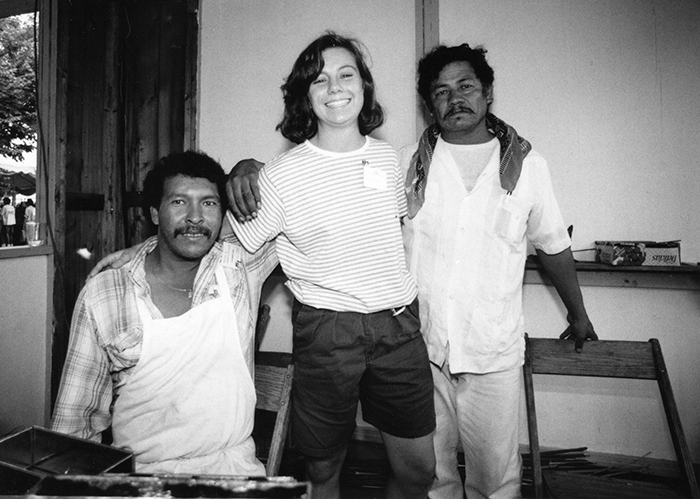Sitting in the airport on my way to Dakar, Senegal, to facilitate training for U.S. Agency for International Development partners seems like a fitting time to reflect on my internship experience at the Smithsonian Folklife Festival. I’m reminded that everything in life is connected if we are just willing to look for it.
So how is this trip connected? Dakar was home to the Lebou people who successfully held off Portuguese slave raiders and lived peacefully with them in the mid-fifteenth century. It’s the kind of story of community resilience that originally attracted me to the Center for Folklife and Cultural Heritage. As a sophomore at The College of William and Mary, I began exploring an interest in history and museums by applying to a few internships at the Smithsonian. There was the National Museum of American History, but the Center provided an option to study living cultures.
As an intern, I was lucky to work with curator Olivia Cadaval on the discussion sessions that brought together participants of the 1992 Folklife Festival’s four programs: New Mexico, White House workers, Native American music, and Maroon cultures. I got to meet people from all four programs and hear their stories. There I learned the power of story and the magic of connection that can come from sharing them.
It was eye-opening to hear the New Mexican wood carver discuss his design inspirations and find common ground with an Irish stone carver who worked on renovations at the White House. In the music sessions, we connected Native American drum makers playing rock ’n’ roll with New Mexicans representing Latino traditions and Maroon communities representing African traditions.

Each morning, I accompanied Olivia on her rounds to prepare the participants to meet on stage to share their experienced. Her warmth and curiosity helped to draw out each person’s story. I learned to follow her lead and started asking lots of questions. What are you doing? Why do you do it that way? Who taught you? It’s amazing where the conversation will lead.
It’s a skill I use regularly as an instructional designer. I need to understand the challenges people face on the job, learn what experts do to solve these problems, and develop a compelling narrative that will help individuals learn the skills they need. The art of asking questions and drawing comparisons between seemingly disparate contexts has helped me bring a much richer context to the instruction I write.
The Folklife Festival also inspired in me a curiosity about the world and led me to seek out opportunities to travel. I spent a year in Puerto Rico on an Americorps project and three months volunteering in Quito, Ecuador. The experience in Quito helped me get a job setting up training programs in Africa and India, which eventually led to my current job at USAID, which happens to be a frequent Folklife Festival partner.
That’s the kind of connection I continue to discover and strive to create, inspired by what I witnessed through the Folklife Festival. I never would have guessed how much my internship experience would help me in the future—I was having too much fun to notice!
Jen Page interned at the Folklife Festival in 1992 and 1994 while studying history and Spanish at The College of William and Mary. She also worked at the Smithsonian Associates from 1994 to 1997, before getting her master’s degree in instructional design and technology from George Mason University. She is currently a senior instructional designer at USAID’s Office of Foreign Disaster Assistance.


